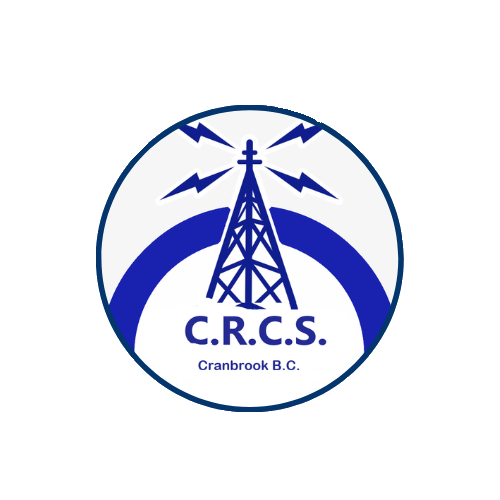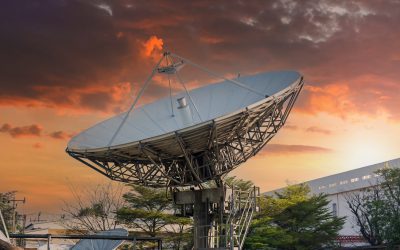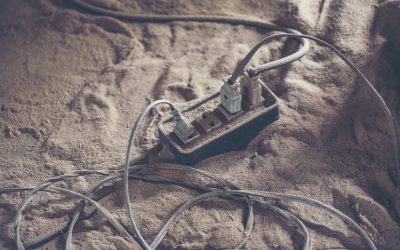Few things are as satisfying in amateur radio as pulling a weak DX station out of the noise, or enjoying a long ragchew with friends on a crisp, clear signal. But as any seasoned operator can tell you, the quality of your receive audio can make or break the experience. Whether you’re battling static on 80 meters or straining to hear through QRM, improving your receive audio isn’t just a luxury—it’s a game-changer for both enjoyment and effective communication.
At the Cranbrook Radio Club Society (CRCS), we’re all about practical solutions that make ham radio more fun and less frustrating. That’s why this week, we’re diving deep into one of the most underrated upgrades you can make in your shack: using external speakers to improve your receive audio.
If you’ve ever wondered why your expensive rig still sounds muddy, or why long listening sessions leave you fatigued, you’re in the right place. Let’s explore how external speakers can help you unlock the best possible receive audio—and share tips for choosing, setting up, and fine-tuning your station for maximum clarity.
Why Receive Audio Matters
Before we get into external speakers, let’s talk about why receive audio deserves your attention. In amateur radio, “receive audio” refers to the sound your radio produces when converting RF signals into audible sound—everything you hear through your rig’s speaker or headphones. Good receive audio means clearer voices, less fatigue, and the ability to distinguish weak or distant signals from the background noise.
Poor receive audio, on the other hand, can turn a fun hobby into a chore. Muffled, tinny, or distorted sound can mask important details, increase listening fatigue, and even contribute to misunderstandings during nets or emergency communications. For operators with hearing challenges, audio quality becomes even more crucial.
While modern transceivers offer advanced DSP, filters, and equalization, one bottleneck remains: the speaker itself. That’s where external speakers come in.
The Limitations of Built-In Speakers
Let’s be honest—most built-in speakers in amateur radios are afterthoughts. They’re small, often housed in plastic enclosures, and designed more for convenience than high-fidelity audio. Here’s why that matters:
- Limited Frequency Response: Tiny internal speakers can’t reproduce the full range of human speech, especially the lower frequencies that give voices warmth and clarity.
- Distortion at Higher Volumes: Need more volume to overcome shack noise? Internal speakers often distort when pushed, making signals harder to understand.
- Poor Directionality: Built-in speakers usually fire upward or sideways, dispersing sound rather than directing it toward you.
- Cabinet Resonance: The radio’s chassis isn’t designed for acoustics, leading to unwanted resonance, rattling, or muffled output.
If you’ve ever compared the sound from your rig’s speaker to a decent pair of headphones, you know what we mean. But what if you could have that same “headphones quality” audio—out loud, all the time?
How External Speakers Improve Receive Audio
Switching to an external speaker is like upgrading from a clock radio to a home stereo. Here’s how the right external speaker can transform your receive audio:
1. Enhanced Clarity
A quality external speaker reproduces speech frequencies more accurately, making it easier to distinguish S-units from static and voices from noise. You’ll notice improved articulation—especially with weak, fluttery, or accented signals.
2. Better Frequency Response
External speakers are engineered to reproduce a wider range of frequencies, capturing both the low-end “body” of a voice and the high-end “sibilance” that aids intelligibility. Many models even let you adjust tone to suit your preferences.
3. Reduced Listening Fatigue
Muffled or harsh audio forces your brain to work harder. With a clean, balanced external speaker, you can listen comfortably for hours—perfect for contesting, nets, or late-night DX.
4. Volume Without Distortion
Need to turn it up? External speakers handle more power and larger sound waves without breaking up or rattling, so you can fill your shack with clear audio.
5. Custom Placement
External speakers can be positioned exactly where you want—at ear level, aimed toward your operating position, or even mounted on the wall. This direct sound path cuts through ambient noise and makes copy easier.
Choosing the Right External Speaker for Receive Audio
Not all speakers are created equal, and not every “ham radio” speaker is the best choice for your needs. Here’s how to pick the right one for improving receive audio:
1. Match Impedance and Power
Check your radio’s external speaker jack—most modern HF rigs expect an 8-ohm speaker and put out a few watts of audio. Using a speaker with much higher or lower impedance can affect volume and sound quality. Always use a speaker rated for at least as much power as your rig provides.
2. Prioritize Intelligibility over Bass
For voice communications, you don’t need booming bass—you need clear mids and crisp highs. Look for speakers with a frequency response focused around 300 Hz to 3 kHz, the sweet spot for human speech. Hi-Fi or “music” speakers may sound full but can make voices muddy.
3. Consider Speaker Size and Enclosure
Bigger isn’t always better, but a larger speaker (3 to 5 inches) in a well-designed enclosure usually produces richer, more natural audio than a tiny driver. A sealed or ported box can reduce resonance and improve clarity.
4. Look for Tone Controls
Some external speakers offer built-in tone controls or switches for “high cut” or “low cut” modes. This lets you tailor the sound to your room or hearing, especially helpful if you’re dealing with static or high-frequency noise.
5. Don’t Overlook Used or DIY Options
You don’t need to spend a fortune. Many commercial “communications speakers” are rebadged PA or bookshelf speakers. Some of the best receive audio in our club comes from thrift-store computer speakers or DIY projects using quality drivers in homemade boxes.
Popular External Speakers for Amateur Radio
Here are a few tried-and-true options—some made for hams, some borrowed from elsewhere:
- Yaesu SP-10/SP-20, Icom SP-23, Kenwood SP-23: Purpose-built for specific rigs, these match your gear and offer decent audio, though often at a premium.
- West Mountain Radio ClearSpeech: Adds digital noise reduction for even cleaner receive audio.
- MFJ-281 ClearTone: Compact and tuned for voice frequencies, a club favorite for its price and performance.
- Bose Companion 2 or JBL Control 1: Repurposed powered speakers (with caution for proper connection and volume).
- DIY Speakers: Build your own with a 4” full-range driver in a wooden box, tuned for voice clarity. Plenty of plans online!
Whatever you choose, remember: even a modest upgrade can yield dramatic improvements in receive audio.
Setting Up Your External Speaker for Best Receive Audio
Getting the most out of your external speaker isn’t just about plugging it in and turning up the volume. Here’s how to optimize your setup:
1. Placement Matters
Position the speaker at ear level and point it directly at your operating position. Avoid placing it behind your rig, in a corner, or under a desk where sound can get muffled or reflected.
2. Mind the Cable
Use a quality, shielded speaker cable to avoid RF pickup—especially important in high-power shacks. Keep runs short and tidy.
3. Experiment with Tone
Try your rig’s internal EQ or tone controls and the speaker’s adjustments. Every room and every ear is different. Don’t be afraid to tweak until you find your “sweet spot.”
4. Isolate from Vibrations
If your shack desk vibrates or resonates, place your speaker on foam pads or isolation feet. This reduces buzz and keeps your receive audio clean.
5. Try Multiple Speakers
Some operators use two speakers—one for the main receiver, one for sub-band or diversity reception. This can help with split operation or contests, keeping different audio streams clear.
Advanced Tips: External Audio Processing for the Ultimate Receive Audio
Want to take your receive audio even further? Consider adding external audio processing:
- Audio Filters: Standalone boxes like Timewave or MFJ filters cut noise and enhance voice signals.
- Equalizers: Simple stereo EQs let you fine-tune frequency response, great for operators with hearing loss or in noisy environments.
- DSP Units: Some external speakers include digital signal processing for noise and hum reduction—worth exploring if QRM is a persistent problem.
Just remember: always insert audio processing after the speaker output, and avoid excessive volume or processing, which can introduce distortion.
Common Pitfalls and How to Avoid Them
A few quick cautions as you upgrade your receive audio:
- Overdriving Powered Speakers: Many computer or studio monitors are powered. Only use these if they accept line-level audio—not direct speaker output from your rig—or you risk damage.
- Impedance Mismatch: Don’t use speakers below 8 ohms unless your radio manual says it’s safe.
- RF Feedback: If you notice hum or distortion when transmitting, check your speaker cables and use ferrite chokes as needed.
The Sound of Success
At CRCS, we believe that every ham deserves to enjoy the best receive audio their station can deliver. An external speaker is one of the simplest, most effective upgrades you can make—often for less than the price of a new antenna or accessory—and the benefits are immediate.
Clearer receive audio means more contacts, less fatigue, and more fun on the air. Whether you’re a casual ragchewer, a contesting pro, or just love listening to the bands, don’t let poor receive audio hold you back.
Try an external speaker—experiment, tweak, and enjoy the difference. And as always, if you have questions, your local club (and the CRCS team!) is just a call or email away.
73 from all of us at Cranbrook Radio Club Society—see you (and hear you, loud and clear) on the bands!




